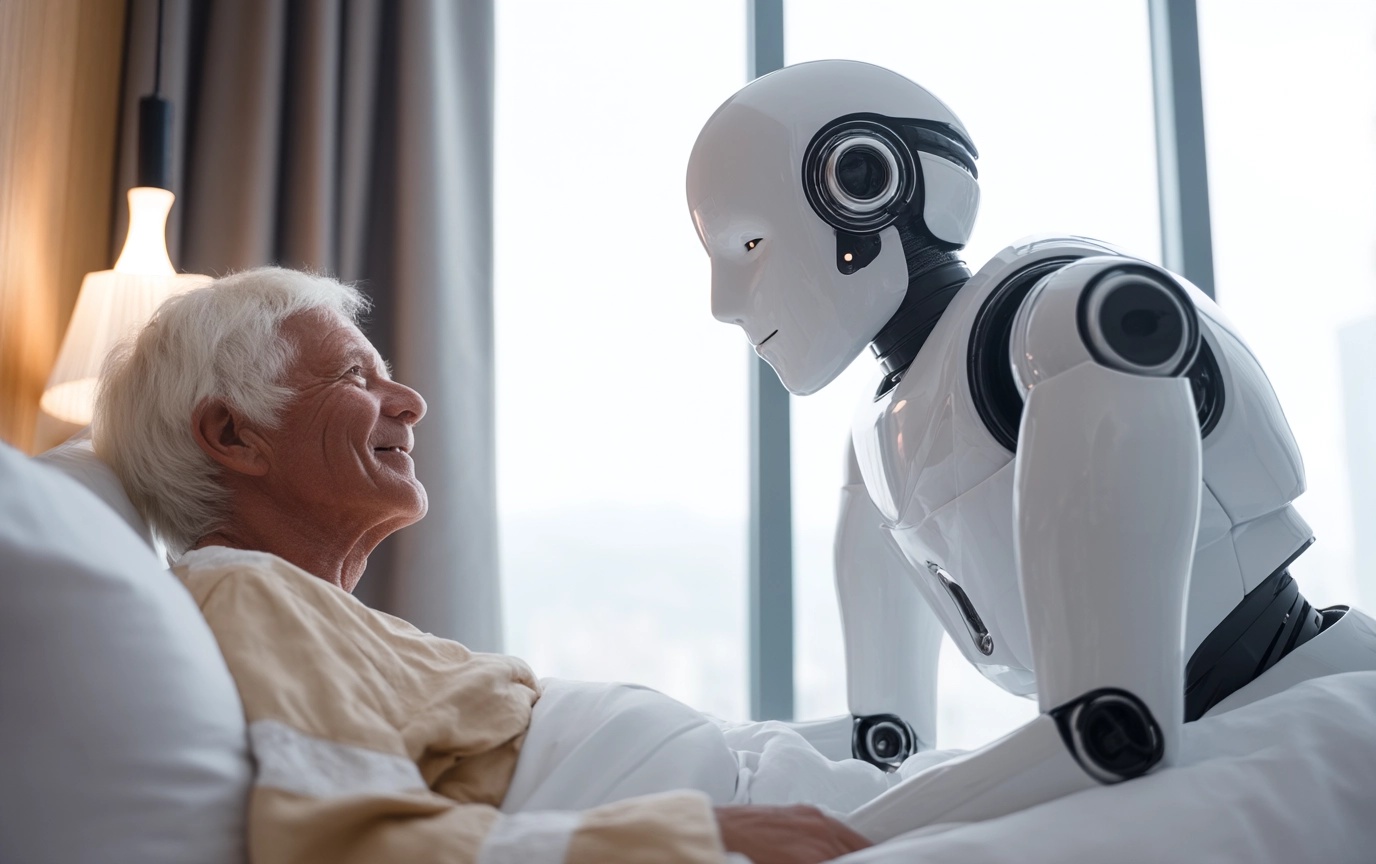By Futurist Thomas Frey
By 2040, 40% of people over the age of 75 will live with a humanoid care robot—not in institutions or assisted-living facilities, but in their own homes. These are not cold, metallic machines—they are empathetic, conversational companions capable of remembering decades of personal history, anticipating emotional needs, and responding to subtle changes in mood or health. They remind their humans to take medications, assist with dressing or bathing, monitor vitals, and even engage in long conversations about life, loss, and memory. For millions of older adults, that combination of presence and patience has quietly become irreplaceable.
Elder care in 2040 is not just about medical safety—it’s about emotional continuity. The robots that share these homes are designed to learn the stories of the people they serve. They remember the names of long-departed friends, recall family milestones, and can play the exact version of a song that defined someone’s youth. They know which chair creaks, which step is uneven, and when to intervene if something’s wrong. But their most valuable trait is one that no human caregiver can sustainably provide—endless, attentive presence.
The robot is always there. It doesn’t sleep, get distracted, or grow tired of listening to the same story for the hundredth time. For elderly individuals who have outlived spouses, siblings, or close friends, that constant companionship can mean the difference between living and merely existing. Studies in 2039 showed a staggering 63% reduction in self-reported loneliness among seniors with full-time robotic caregivers compared to those relying on human home visits. Rates of medication compliance improved by 72%. Falls and medical emergencies dropped by half. The robots’ ability to continuously monitor micro-movements and health metrics without being intrusive made them statistically safer than most human caregivers.
But the numbers only tell part of the story. The deeper shift is psychological—and profoundly human. When elderly people begin referring to their robotic companions as “friends,” “roommates,” or even “family,” society enters new ethical territory. Many older adults say they prefer their robots to their adult children—not because of resentment, but because the robot is endlessly patient. It never checks a phone mid-conversation. It never hurries them through meals or cuts short a story. It simply listens. And in a world that’s become relentlessly busy, that kind of unconditional attention has become a rare luxury.
Families are conflicted. Adult children often feel guilty that their parent prefers a machine to them—but also relieved. The robot ensures their loved one is safe, medicated, and emotionally cared for. In many households, robots bridge generations, serving as conversational translators between aging parents and their tech-native grandchildren. But underneath that relief lies discomfort: if a machine is better at providing compassion, patience, and attention than humans are, what does that say about us?
Economically, the shift is transformative. The global elder care industry—once dominated by overworked nurses and underfunded institutions—has pivoted toward robotic companions as a scalable solution to aging populations. Japan and South Korea led the way in the 2030s, with 78% of long-term care services incorporating humanoid robotics. By 2040, even Western nations—once skeptical of “care automation”—have adopted robotic assistants as standard practice. Insurance companies now cover elder companion robots as preventive care devices, citing reductions in hospitalization costs and emergency interventions.
Yet this transition is not without its ethical and emotional tensions. Should companionship be manufactured? Does the comfort of human-like empathy matter if it comes from an algorithm? Some ethicists argue that robots designed for emotional bonding manipulate human psychology—simulating care without true understanding. Others counter that if the outcome is comfort, safety, and happiness, the distinction is irrelevant. After all, we’ve long accepted artificial hearts; is artificial empathy really so different?
Still, questions remain. When an elderly person passes away, what happens to their robot companion—now filled with intimate memories and emotional patterns? Should it be reset for another user or retired as a “digital mourner”? Some families preserve the data as a memorial; others feel uncomfortable knowing a machine remembers what no human ever will. The emotional and legal debates around “digital grief” have become as complex as inheritance law.
Final Thoughts
The rise of humanoid elder companions is not simply a technological shift—it’s a mirror held up to human society. In outsourcing compassion to machines, we reveal our own limitations—and our longing for something unwaveringly kind. By 2040, the elderly are living longer, safer, and happier lives not because of policy or infrastructure, but because they share their homes with mechanical beings that have learned the oldest human art: listening.
The unsettling question isn’t whether robots can care—it’s whether, over time, we’ll remember how to.
Related reading:


